Different shapes of dyslexia
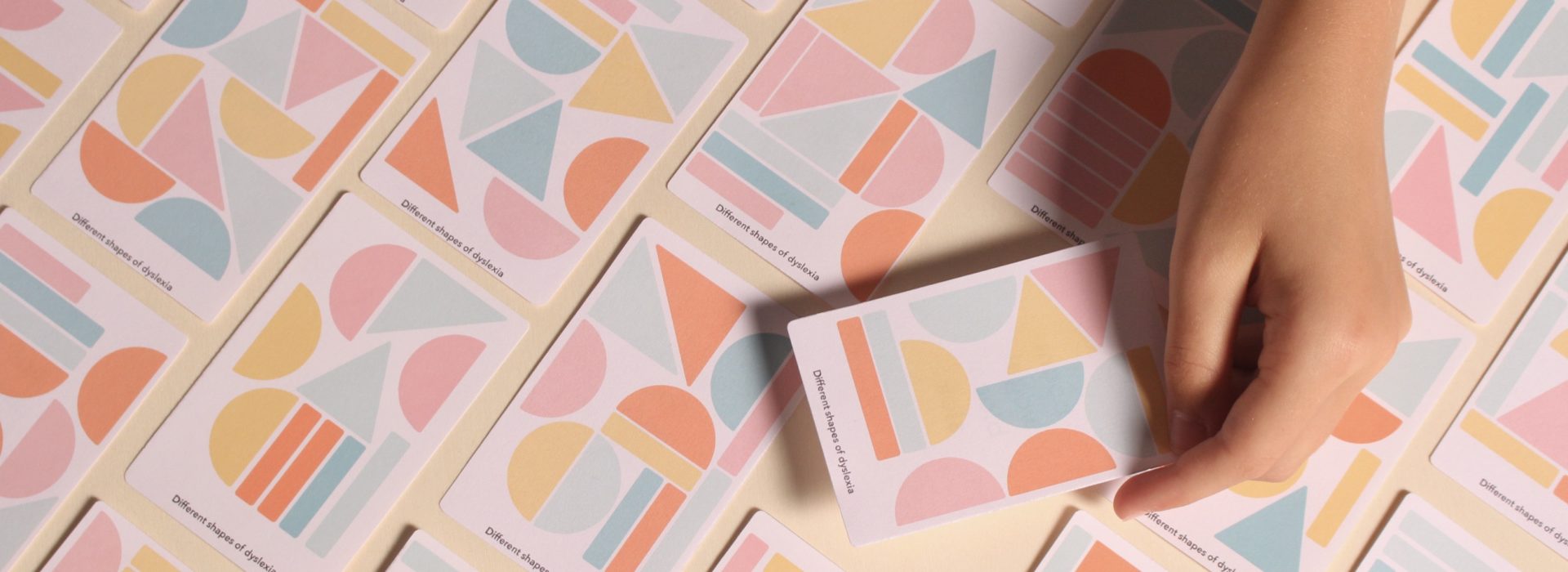
Hi! I’m Tessel, a graduate in Product Design. Over the past four years, I have been able to develop myself at the Willem de Kooning Academy into a social designer with an interest in children, education, and health care. With a passion for styling and graphic design that I include within my designs. For my graduation, I researched dyslexia within our current education system.
I have dyslexia myself and during my primary school period, I had a lot of insecurities. I couldn’t keep up with the lessons, I was ashamed of the tools that helped me read better, and every single day I went to school with a stomach ache. During every test my thoughts were confirmed, I scored badly, so I was stupid. I worked hard, got a lot of extra tutoring after school but it didn’t help. I got frustrated, felt misunderstood, stupid, and above all very insecure.
And it turns out I’m not the only one, 80% of dyslexics have felt the same things during their school career. Within our current education system dyslexia is a huge disadvantage, the entire system is based on their weakest points reading and writing. Which results in low self-esteem and less effective development.

Dyslexia is always interpreted as not being able to spell well or read quickly. And therefore mainly known for their weak spots. Only 3% of people including dyslexic, see dyslexia as anything else other than a disadvantage.
However, scientists claim that dyslexics contain important traits that will be of great importance in the future. And the numbers don’t lie eighter, 1 in 10 people diagnosed with dyslexia. Compared to 40% of the most successful people who are dyslexic.

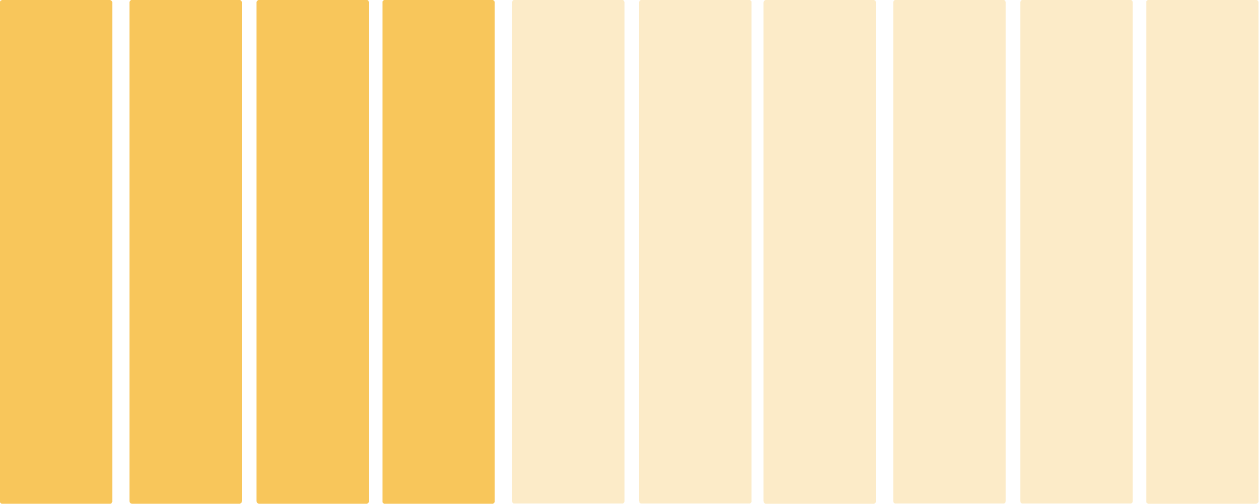
What kind of tools can equip children with dyslexia to achieve their fullest potential and personal best, during their primary school tenure?
And to be able to give a thorough answer, I will briefly take you through my research about the dyslexic brain, before introducing my project.
Dyslexia is caused by different wiring and structure of the brain. The brain can be divided into two hemispheres, each with its own characteristics. Scientific research has shown that the right hemisphere of people with dyslexia is dominant. making the left side automatically recessive, creating a natural weakness for processing written material, making it more difficult to recognize, spell, and decode words. A dominant left hemisphere is much more common and is therefore seen as normal in our society. This group of people will experience a natural deficit in creativity and insight. But in our language society, this is often less noticeable.

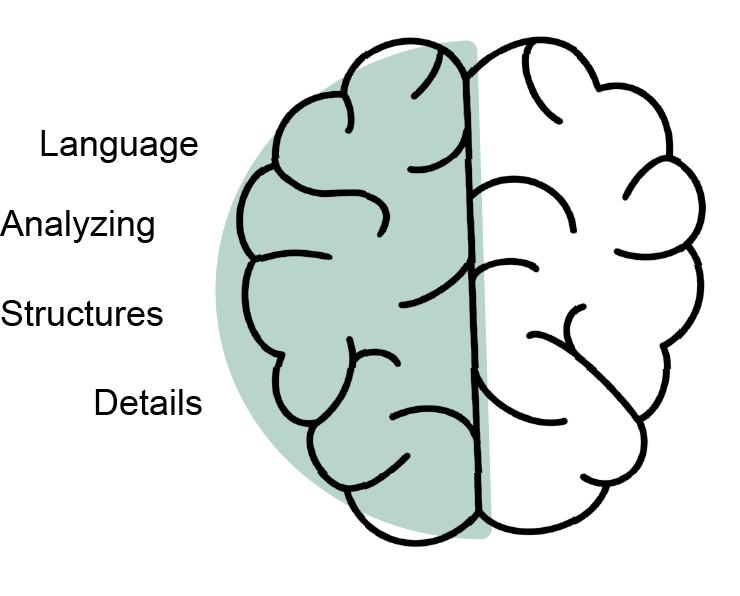
The consequences of this right hemisphere dominance appear when you look at the specific functions and skills that this side produces. From this, you can also conclude why the mindset of dyslexics clash with our current structured society and education system.
The other big difference lies within the structure of the brain. With non-dyslexics, the neurons are short and close together. causing them to make a shorter connection with the other neurons. this creates a physically smaller circuit. And ensure that the individual is well able to process fine details and thus will be good with detail-oriented tasks, like language.
The exact opposite happens with dyslexics. The space between the neurons is larger and the axons form longer connections to the more distant parts of the brain. They will automatically incorporate more information into their thinking process, making it easier for them to discover non-obvious patterns. This explains why dyslexics often come up with innovative ideas.
In summary, Dyslexia is much more than just a language delay, it’s a different way of thinking, which also brings positive qualities.
But what exactly happens in the brain that causes dyslexics to experience difficulty with language? People use three different brain regions when reading or writing. These areas are directly connected to each other and are all located in the left hemisphere of the brain. Each area is responsible for part of the language processing.
Dyslexics do not process language in the left hemisphere of the brain. instead, the dominance activates two areas on the right side of the brain. areas responsible for the perception and visualization of objects. and because of the longer neurons, these stimuli do not reach the language centers on the left side of the brain
Due to this strong predisposition to visual stimuli and a longer path to the language center on the left side of the brain, dyslexics mainly process letters as objects. But a letter is of course very different from an object. A letter has a fixed spatial structure: the letters b, p, d, or q are similar, it is only a matter of perspective, but the meaning changes
During my research, I concluded 3 problems surrounding this topic.
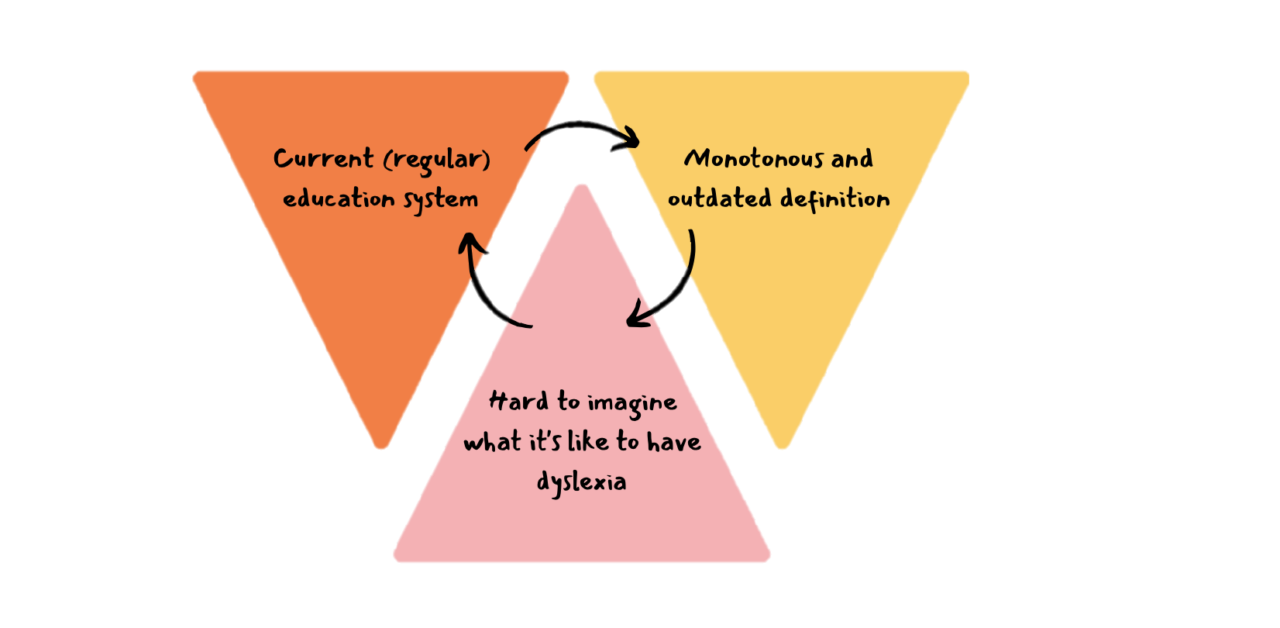
- The current (regular) education makes dyslexics feel stupid because it does not recognize the strengths of dyslexia and only focuses on its limitations: Moreover, the positive qualities of dyslexia are considered less important within our current education system, while they can be of great value in our society.
2. The definition of dyslexia is monotonous and outdated, focusing only on the negative effects of
dyslexia, resulting in a distorted image of dyslexia as a disorder instead of a different way of thinking.
3. In addition, it is difficult for non-dyslexic people to imagine what it is like to have dyslexia, creating misconceptions and providing inappropriate help, for example by family members.
Something that connects these problems is the mental impact that dyslexia has on children, so this is also my focus for this project. I wanted to help this group feel more understood and confident, by adapting the current view of dyslexia as a disorder to dyslexia as a different way of thinking.
I designed a toolbox called: Different shapes of dyslexia.
The aim of this toolbox is to pay more attention to the positive aspects of dyslexia. and thus improve the stigma surrounding the current definition. by letting non-dyslexic children and parents experience what it is like to have dyslexia. and introduce language to children with dyslexia in a new and more creative way.
The box contains a book, blocks, and educational material (in the form of cards).
Dyslexia book
This book was made in collaboration with 15 dyslexic children. We looked at how they perceive letters/words and together translated this into a visualization. to provide a common thread within this book, all visualizations are based on the word “dyslexia” with the underlying thought of literally “what dyslexia can look like”.
I’ve categorized the children’s experiences into 4 chapters. Based on the visualizations made with these children and the research I did for my theory, every visualization/perception can be linked back to a property of the dyslexic brain. I explain why the child in question perceives words in this way. And associate this property with valuable characteristics.
The structure of the book is as follows:
at the beginning of each chapter is a piece of text to read. In this, I explain part of the dyslexic brain, including the valuable properties associated with it. on the next pages the same text visual, only now from a dyslectic point of view, to show how a dyslexic would experience the same text. Then come the different visualizations one by one.
the goal of the book is for non-dyslexics to get a better idea of what dyslexia is, and how it’s like to have/read with dyslexia. And they will have a better understanding of what a dyslexic child goes through in the current education system. The purpose of the book is therefore mainly to inform and is aimed at the parents, a guardian, or teacher.
But the visualizations are also a good medium for both dyslexic/non-dyslexic children, for example, to start a conversation with them about dyslexia. It is therefore recommended that you go through this book together with your child.
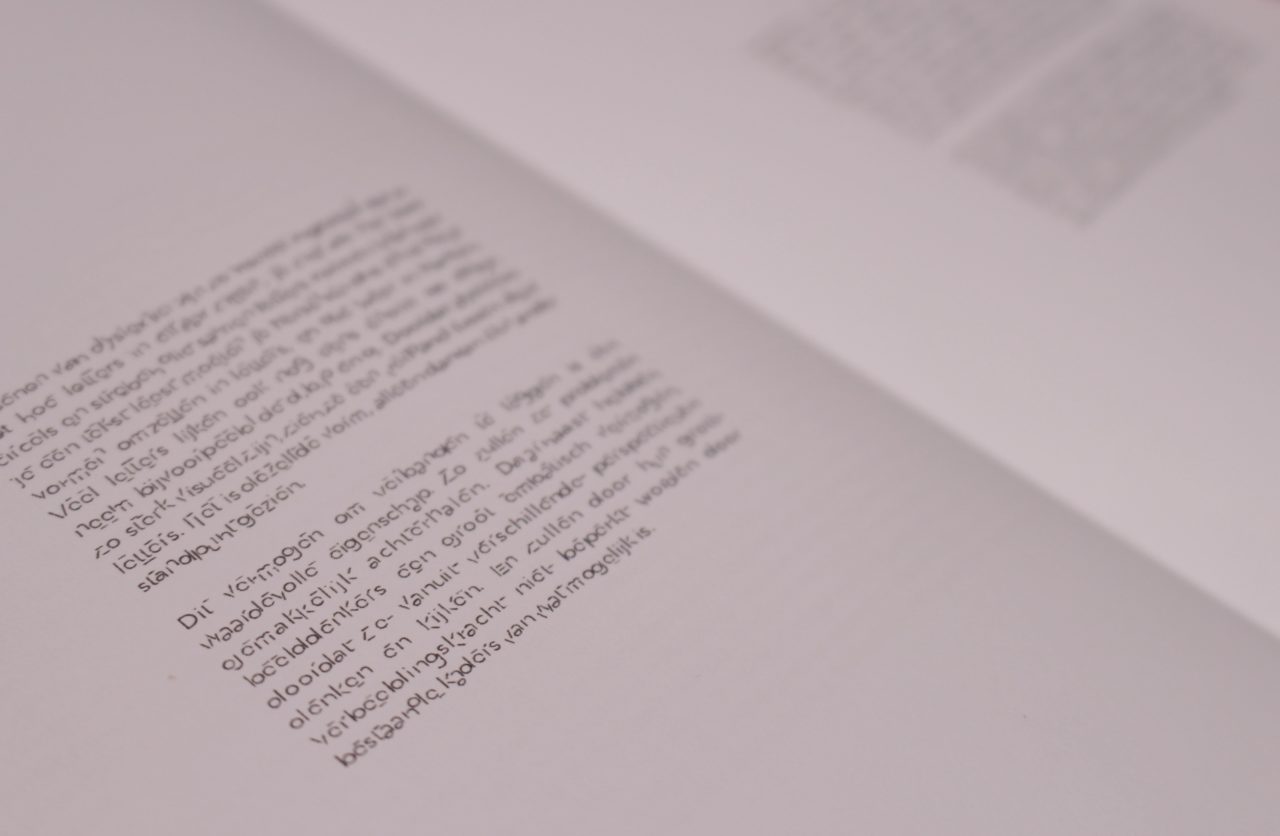
Besides the book, I wanted to offer a hands-on experience in the form of a product. something to work with physically, and more aimed at the children themselves. I was inspired by how the dyslexic brain works… how it perceives letters as shapes. And came up with a set of blocks. In different shapes that together form dyslexia.
Blocks
These blocks give not only a hands-on experience of what it is like to have dyslexia, how it is to perceive letters as shapes. But also give an option for children to deal with language in a different and more creative way. These blocks work very well for dyslexics, they can use their natural strength/talent for language. In addition to playing with different words, children are also encouraged to make shapes. for example, children can write the word bunny as well as draw a bunny from the same blocks.
This product is aimed at children (although parents also enjoy playing with it) to explain to them what dyslexia is.
the blocks are made of 3mm thick plexiglass with a satin finish. the transparency of the blocks ensures that you can recognize the different shapes at all times. this way you can clearly see which shapes a letter is made up of. In addition, that the material is safe, hygienic, and as we call it in the Netherlands Hufterproef.
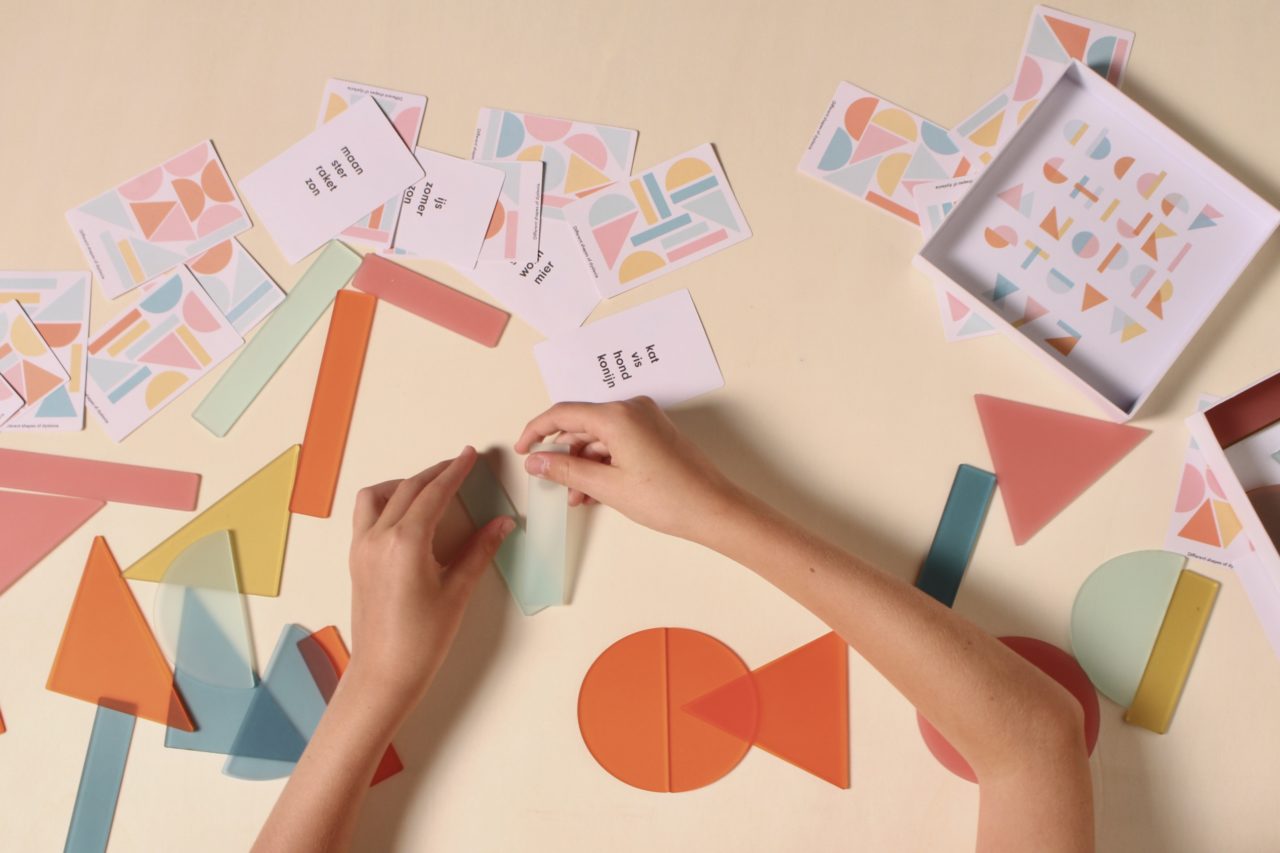
To offer a little bit more structure, I have added a visualization of the alphabet in the packaging of the box. There is also a manual in the box that explains how to use the blocks. Which emphasizes that nothing is right or wrong. letters can be formed in many ways and that the visualization is just an example.
after some testing I found out that children need more guidance and support, in the beginning, just to get started. so I enlisted the help of Villa Zebra. a children’s museum specializing in creating creative educational teaching materials. Together we looked at different possibilities that also stimulate the creativity of children. we ended up with a set of cards.
The cards are optional, and this is also indicated in the manual. It’s a way to start and gives you a bit of guidance, but you can also get started without it. What I saw a lot during testing is that children take a card and make two words out of it before they start inventing/writing/building words on their own.
On the cards are 4 words, with varying difficulty, so that every child can get started without indicating a clear level/degree of difficulty. On the front of the cards is an image of different bocks that you will need to form the words on the back, this eliminates a lot of blocks in the box and gives the child more overview.
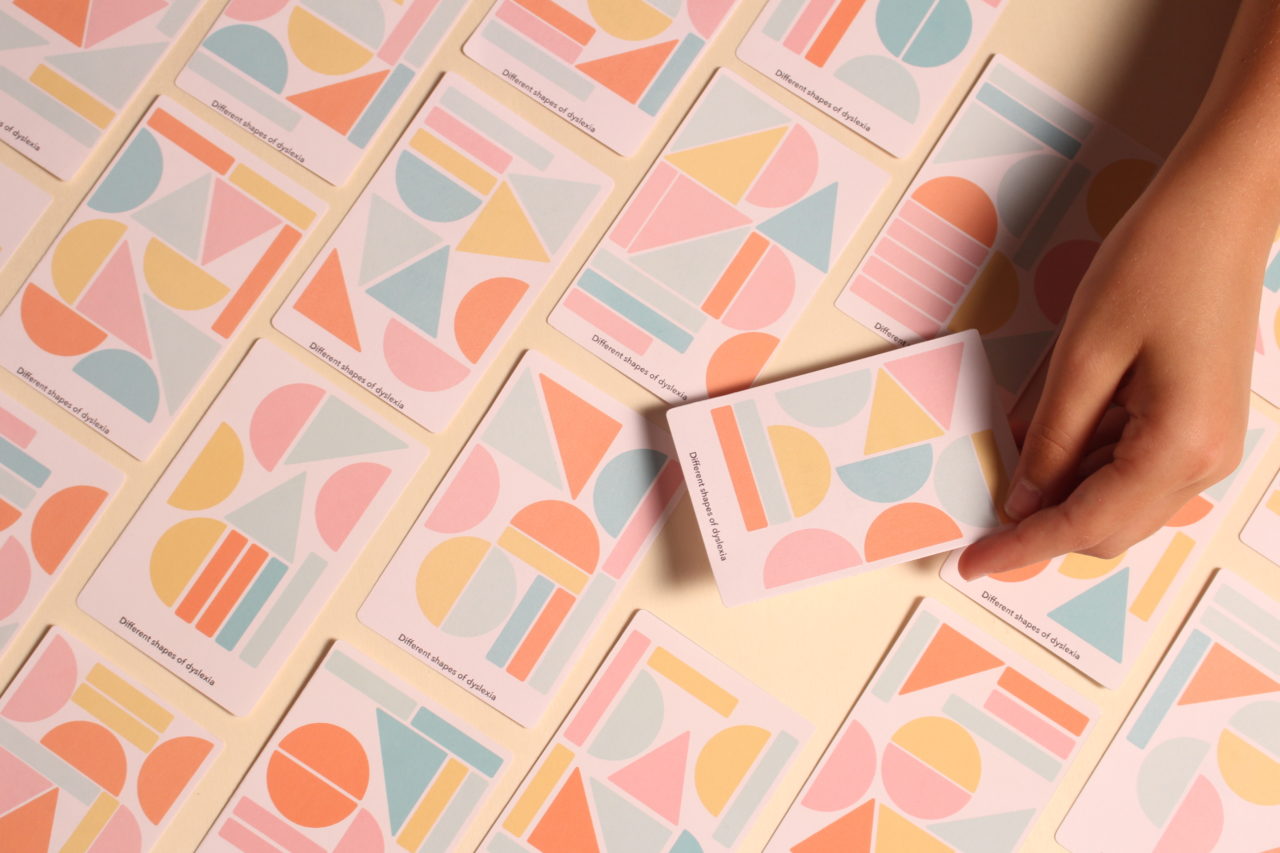
In short, this toolbox gives a better picture of what dyslexia exactly entails, and focuses not only on the negative characteristics but also on the power of dyslexia. In addition, you experience what it is like to have dyslexia. and it gives children a medium to come into contact with the language in a creative and playful way.
Want to see more? visit my portfolio site: tesselthijsse.com